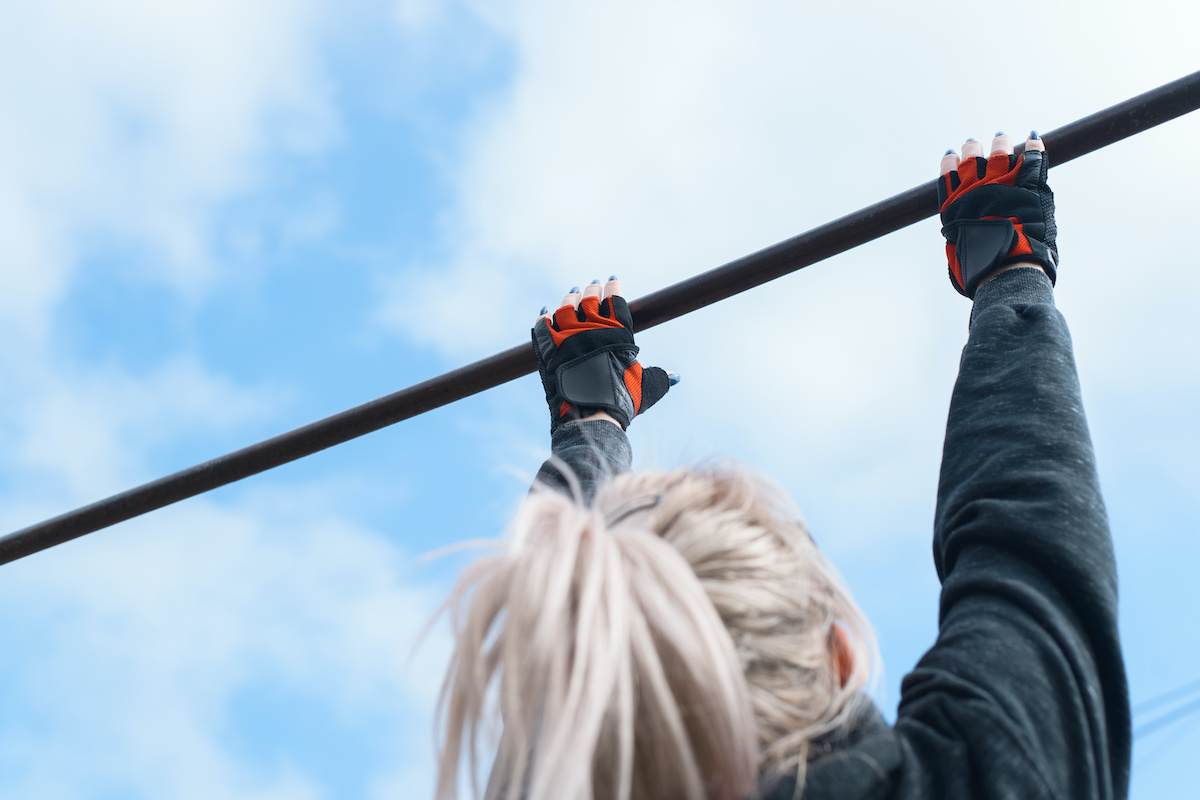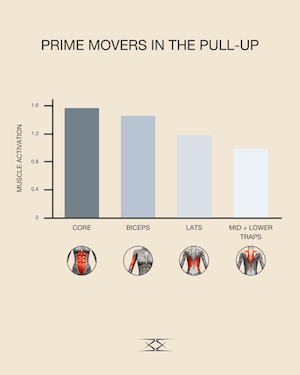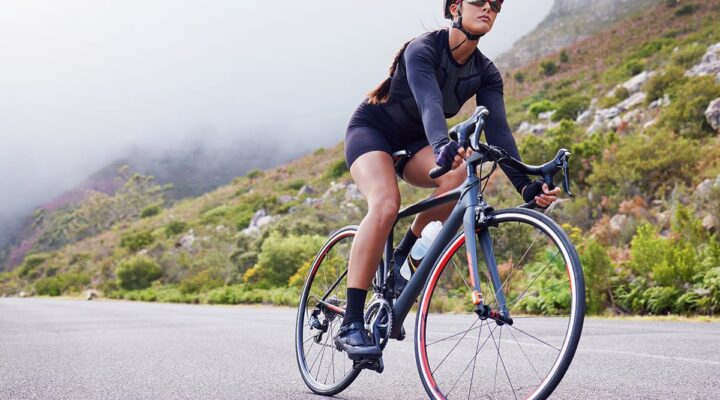How to Do A Pull-Up: Put the Foundations in Place to Reach for Your First

For intermediate gym-goers, a pull-up is the ultimate test of your growing strength, and certified proof that you can now shift your whole body weight. Once mastered it will be a regular in your gym routine — a functional body weight compound move that builds serious back and biceps muscle, along with working your core and shoulders like little else out there. But how do you become a pull-upper? It’s a tough ask for any and every gym-goer, but a rewarding one when you finally get to the top of that gym station.
To help get you there we’ve roped in the expertise of Tamara Short, a coach at CrossFit Islington and the co-founder of Blue Elvin, a brand dedicated to supporting and advancing women’s training (who also happen to have created a pull-up programme designed specifically for women — sign up here for their next intake).
Short covers all the basics and foundations you need to put in place for us, from which muscles to work to an easy-to-follow guide to using a pull-up band, so you can conceive, believe, and achieve that first pull-up.
Why Might A Pull-Up Be ‘More Difficult’ For Women?
While I don’t prescribe to movements being ‘more difficult’ for women, as we can do anything, there are two reasons why it might be more challenging for women to get a pull-up. Firstly, women generally don’t attempt this movement anywhere near as much as men. Men tend to focus on mastering a pull-up as one of their foundational movements in the gym whereas women focus on other movements. Practicing a pull-up and using those muscles is exactly what will help build the strength to get one.
Secondly, on average women can have up to 40 percent less muscle mass in their upper body. This will obviously impact our ability to complete a pull-up, an upper-body dominant lift. However, women tend to have lower body weights than men and shorter arm lengths which can give us an advantage.
What’s The Difference Between A Chin-Up And A Pull-Up?
The only difference between a chin-up and a pull-up is grip. A chin-up is with a supinated (reverse) grip, where your fingers are facing you when gripping the pull-up bar. A pull-up is with pronated grip, where your fingers are facing away from you when gripping the bar.
What Muscles Do Pull-Ups Work? And How Should You Train Them To Reach Your First?
A 2018 study looked at muscle activation during the pull-up and found the prime muscle groups used are core, biceps, lats and mid and lower traps.
 The diagram to the side shows the four prime muscle groups and the muscle activation during a pull-up with the core being the most active muscle group when performing a pull-up.
The diagram to the side shows the four prime muscle groups and the muscle activation during a pull-up with the core being the most active muscle group when performing a pull-up.
This makes sense as our core helps to maintain a rigid body position throughout, even if it is a muscle that perhaps might get overlooked when thinking about the pull-up.
So, in order to get an unassisted pull-up, you need to focus on targeting those muscle groups along with grip strength to get used to hanging on the bar.
The Exercises To Build You Up To Your First Unassisted Pull-Up
To build strength in the prime muscles used for a pull-up, you need to be using those prime muscle groups. Replicating any pull — ring rows, bent over rows, assisted pull-ups — are all great movements to facilitate strength building.
However, the movements you can do will depend on your strength to begin with. You will likely need to start with an exercise such as ring rows and work your way up to an assisted pull-up or chin up. You will also want to do a series of other exercises to target the core, biceps, lats and mid-lower traps in isolation.
How Much Consistent Training Do You Need To Do To Get To Your First ?
This is very dependent on the person and the upper body strength they have. It can take anywhere between six weeks to six months.
If you do any strength training, functional training or CrossFit you will already have some movements within your training that will be targeting your biceps, core, lats and mid-lower traps. In addition to this you will want to spend time specifically working on those muscles a couple of times a week, giving plenty of time for your muscles to repair and recover. We recommend two to three 20-minute sessions a week.

To Assist Band Or Not To Assist Band
Using a band is a great way to practice your pull-ups. They are the closest exercise to the pull-up itself and can build your confidence in the movement. If you are doing banded pull-ups with a combination of other exercises to build strength in those prime movers then it shouldn’t become a crutch. You will also want to switch out the bands over time so that you are progressing to using lighter bands, therefore building up your strength.
To complete a banded pull-up you loop a resistance band around your pull-up bar and place your feet within it. Scalings in order of difficulty are as follows:
- Both feet in the band.
- One foot in the band, with the other foot crossed over the foot within the band.
- One foot in the band, with the other foot held next to the foot within the band. Thinner bands will increase the difficulty there on in until you can complete a pull-up unassisted.
You can also do assisted pull-ups with boxes or a stack of plates underneath the pull-up bar and increase the difficulty by working your way onto your toes so your legs will be assisting less.
Three Pull-Up Tips To Remember
Pull-ups are one of the fundamental movements in the gym. Being able to pull up your own body weight is a huge testament to your strength — but it won’t happen overnight. My three top tips are:
- Dedicate time and effort each week to develop this skill.
- Focus on strengthening the prime movers in a pull-up – core, biceps, lats and mid-lower traps.
- As with any skill, have patience. This movement will feel different day-to-day, especially for women as our menstrual cycle has a big impact on strength and body weight fluctuations. Be kind to yourself as you spend time working on this.
Designed specifically for women, you can sign up to the Blue Elvin ‘get to your first pull up’ six week programme here.


















